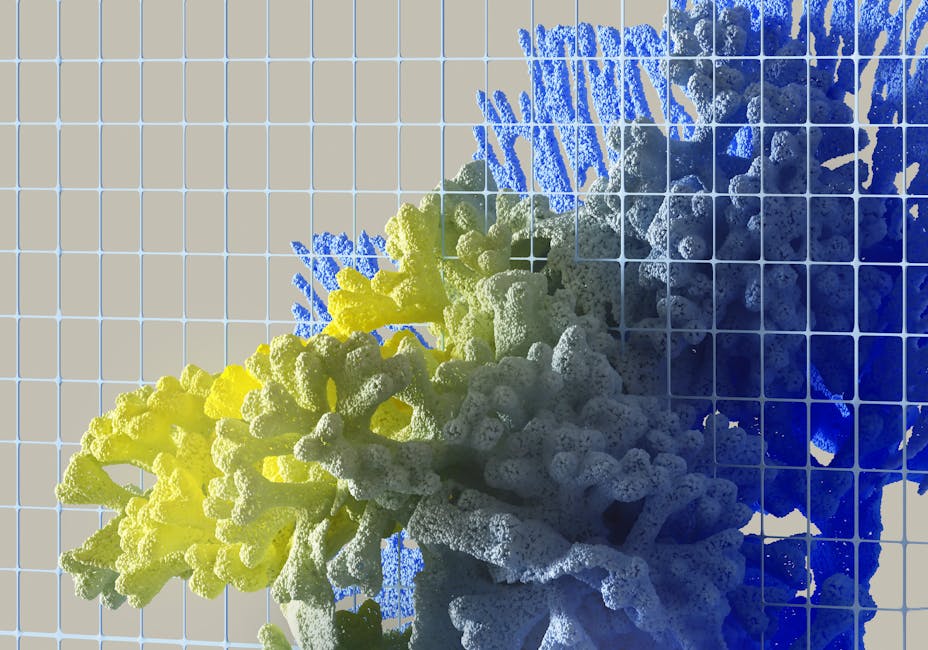Understanding Blockchain Architecture
As you explore blockchain architecture, you’ll discover six core components working in harmony: nodes, transactions, miners, blocks, blockchain, and network protocols. Nodes, classified into full nodes, light nodes, and miner nodes, each play a crucial role in maintaining the network’s stability and security. Consensus mechanisms, such as Proof of Work and Byzantine Fault Tolerance, facilitate agreement amongst nodes. Smart contracts, built on a layered architecture, interact with the blockchain. As you navigate this intricate landscape, you’ll uncover the intricacies of decentralised systems – and uncover even more hidden gems waiting to be explored.
Key Takeaways
• A blockchain network consists of six core components: nodes, transactions, miners, blocks, blockchain, and network protocols.• Node classification is vital, with full nodes storing a complete copy of the blockchain and verifying every transaction and block.• Consensus mechanisms, such as Proof of Work and Byzantine Fault Tolerance, facilitate nodes agreeing on a single, trusted state of the blockchain.• Blockchain data structure resembles a linked list of blocks, each containing a hash of the previous block, a timestamp, and transaction data.• Smart contract architecture consists of application, chaincode, runtime, platform, and network layers, each playing a crucial role in the decentralised system.
Blockchain Network Components

When designing a blockchain network, you’ll typically encounter six core components that work in tandem to maintain the integrity and security of the system: nodes, transactions, miners, blocks, blockchain, and network protocols.
These components work harmoniously to maintain the network’s stability and security.
The network topology, which refers to the arrangement of nodes within the network, plays a vital role in determining the overall performance and resilience of the blockchain.
A well-designed network topology can substantially improve the network’s ability to withstand attacks and maintain its integrity. Node clusters, which are groups of nodes that work together to achieve a common goal, are a key aspect of network topology.
By strategically placing node clusters across the network, you can enhance the overall efficiency and security of the system.
In a decentralised network, node clusters can be used to distribute the workload, guaranteeing that no single point of failure exists.
This not only improves the network’s overall performance but also increases its resistance to attacks.
Node Types and Roles

You’ll encounter various node types and roles in a blockchain network, each with distinct responsibilities that contribute to the system’s overall functionality and security.
These nodes are the backbone of the network, ensuring the integrity and availability of the blockchain. Node classification is vital in understanding the roles each node plays.
You’ll typically find full nodes, light nodes, and miner nodes, each with unique responsibilities.
Full nodes, also known as full-validated nodes, store a complete copy of the blockchain, verifying every transaction and block. They’re the guardians of the network, ensuring the integrity of the blockchain.
Light nodes, on the other hand, only store a partial copy of the blockchain, relying on full nodes for transaction verification. Miner nodes, responsible for creating new blocks, are a type of full node that competes to solve complex mathematical puzzles, securing the network through proof-of-work.
Node governance is key in maintaining the network’s health. Nodes must agree on the state of the blockchain, ensuring everyone’s on the same page.
This is achieved through a process called consensus, which we’ll explore later. For now, it’s vital that nodes work together, each playing their role, to maintain the integrity and security of the blockchain.
Consensus Mechanisms Explained

As you explore the world of blockchain architecture, you’ll soon realise that consensus mechanisms are the lynchpin that holds decentralised systems together.
You’re about to learn how different consensus mechanisms, like Proof of Work, Byzantine Fault Tolerance, and Leader-Based Consensus, facilitate that nodes agree on a single, trusted state of the blockchain.
Get ready to grasp the intricacies of these mechanisms and how they enable a decentralised, trustless, and resilient network.
Proof of Work Basics
In the domain of blockchain, you’re likely to encounter the term ‘proof of work‘ frequently, and for good reason: it’s the pioneering consensus mechanism that has been securing blockchain networks since the inception of Bitcoin.
As you explore deeper, you’ll discover that proof of work is a decentralised, energy-intensive process that involves solving complex mathematical puzzles to validate transactions and create new blocks.
This process is carried out by a network of computers, known as miners, that compete to solve these puzzles, thereby securing the network and earning rewards in the form of cryptocurrency.
However, this energy-hungry process has raised concerns about its environmental impact, with estimates suggesting that the energy consumption of some proof-of-work networks rivals that of small countries.
In addition, the high energy costs and specialised hardware required to mine have led to mining centralisation, where only a few large players dominate the network, compromising its decentralisation.
Despite these challenges, proof of work remains a widely used and effective consensus mechanism, and understanding its intricacies is vital for building a robust blockchain architecture.
Byzantine Fault Tolerance
Building on the concept of proof of work, you’re now entering the domain of Byzantine Fault Tolerance, a consensus mechanism that tackles the problem of faulty or malicious nodes in a distributed system, making it vital that your blockchain network remains resilient and secure.
In a distributed system, nodes can fail or act maliciously, which can lead to inconsistencies and security breaches.
Byzantine Fault Tolerance (BFT) is designed to prevent this by achieving consensus even when some nodes are faulty or malicious.
This is essential in blockchain networks, where a single point of failure can compromise the entire system.
BFT guarantees that the network can still function correctly even if some nodes are faulty or malicious.
This is achieved by using complex algorithms that can detect and isolate faulty nodes.
By doing so, BFT provides fault tolerance, making certain that the network remains operational even in the presence of faulty or malicious nodes.
This consensus mechanism is particularly vital in blockchain networks, where security and resilience are paramount.
Leader-Based Consensus
Leader-Based Consensus is a consensus mechanism that empowers a single node, the leader, to orchestrate the consensus process, facilitating that all nodes in the network agree on a single state. This approach simplifies the consensus process, making it more efficient and scalable.
The leader node takes charge of the consensus process, reducing the complexity of achieving agreement amongst nodes.
Leader-Based Consensus allows for better scalability, as the leader node can handle a large number of transactions.
With a single node responsible for validation, transactions are validated faster, reducing the overall latency.
However, Leader-Based Consensus isn’t without its challenges, such as the risk of a single point of failure and potential security vulnerabilities.
The leader node can be replaced or rotated to maintain the network’s resilience and adaptability to changing conditions.
Blockchain Data Structure

Your blockchain data structure resembles a linked list of blocks, each containing a hash of the previous block, a timestamp, and transaction data, which together form a tamper-evident record.
This structure allows for efficient data serialisation, making certain that each block’s contents are accurately represented and easily accessible. The hash function, a vital component, generates a unique digital fingerprint for each block, enabling the creation of an immutable ledger.
When a new block is added, the hash of the previous block is included, creating a chain of blocks – hence the term blockchain. This design makes it virtually impossible to tamper with the data, as any attempt to alter a block would require recalculating the hashes for every subsequent block.
As you explore further, you’ll notice that each block contains a timestamp, which helps establish a chronological order of transactions. This timestamp, combined with the hash function, creates a digital signature that verifies the integrity of the data.
The transaction data itself is comprised of multiple transactions, each containing information such as sender and receiver addresses, transaction amounts, and other relevant details.
In essence, your blockchain data structure is a masterclass in data organisation, leveraging hash functions and data serialisation to create an unalterable, transparent, and efficient record of transactions.
Smart Contract Architecture

As you design your blockchain architecture, you’ll need to ponder the nuances of smart contract architecture, where strategic contract deployment can make all the difference.
You’ll want to break down your smart contract into distinct layers, ensuring each component serves a specific purpose.
Contract Deployment Strategies
When deploying smart contracts, a well-planned strategy is crucial to guaranty seamless interaction between the blockchain network and the contract’s underlying logic.
You’ll want to reflect on the entire lifecycle of your contract, from development to deployment and maintenance.
Some key considerations for your contract deployment strategy:
-
Cloud Migration: Leverage cloud-based infrastructure to facilitate scalability and flexibility for your contract.
-
Automated Testing: Implement automated testing to verify your contract’s functionality and security before deploying it to the blockchain.
-
Version Control: Use version control systems to track changes and updates to your contract’s codebase.
-
Security Audits: Perform regular security audits to identify and address potential vulnerabilities in your contract.
-
Monitoring and Analytics: Set up monitoring and analytics tools to track your contract’s performance and identify areas for optimisation.
Smart Contract Layers
Building on the foundation of a well-planned contract deployment strategy, you’re now ready to dissect the anatomy of a smart contract, comprising multiple layers that work in harmony to execute its intended functionality. These layers work together seamlessly, enabling the smart contract to operate efficiently and securely.
| Layer | Description |
|---|---|
| Application | Defines the business logic and rules of the smart contract |
| Chaincode | Provides chaincode abstraction, enabling the interaction between the application and blockchain |
| Runtime | Responsible for executing the smart contract’s code and managing data storage |
| Platform | Handles the underlying blockchain infrastructure, ensuring scalability and security |
| Network | Facilitates communication between nodes, enabling the decentralised network to function |
Decentralised Application Logic
You design a decentralised application’s logic by architecting smart contracts that integrate seamlessly with the underlying blockchain, maintaining a harmonious balance between functionality and security. This delicate balance is vital, as it directly impacts the performance, scalability, and overall user experience of your decentralised application.
When crafting your decentralised application’s logic, consider the following essential aspects:
-
Off-Chain Data: Store and process large datasets off the blockchain to avoid congestion and optimise performance.
-
Business Logic: Implement complex business rules and workflows using smart contracts, guaranteeing transparency and immutability.
-
Modular Design: Break down your application’s logic into smaller, reusable components to facilitate maintainability and upgrades.
-
Event-Driven Architecture: Design your application to respond to events and triggers, enabling real-time interactions and automation.
-
Security Audits: Regularly perform thorough security audits to identify vulnerabilities and safeguard the integrity of your decentralised application.
Network Communication Protocols

How do network communication protocols orchestrate the seamless exchange of data across blockchain networks, guaranteeing both security and efficiency?
As you explore the world of blockchain architecture, understanding the role of network communication protocols in facilitating the flow of data is crucial. These protocols are the unsung heroes that enable nodes to communicate with each other, verifying transactions and updating the ledger in real-time.
Packet routeing, a critical component of network communication protocols, guarantees that data packets are efficiently routed across the network. This process involves breaking down data into smaller packets, assigning them a destination address, and transmitting them through the network.
Each node, acting as a router, forwards the packets to their intended destination, guaranteeing that data reaches its target efficiently.
However, as the network grows, so does network latency – the delay between sending and receiving data.
To mitigate this, network communication protocols employ clever strategies like data compression, caching, and content delivery networks (CDNs). These techniques reduce the amount of data transmitted, minimising latency and guaranteeing a responsive network.
Security and Scalability Concerns

As blockchain networks scale, they face a formidable trade-off between security and scalability, necessitating clever solutions to mitigate the risks of centralisation, 51% attacks, and smart contract vulnerabilities.
You’re likely wondering how to balance these competing demands. The truth is, it’s a delicate dance.
On one hand, you need to safeguard the security of your network, protecting it from cyber threats and malicious actors.
On the other hand, you need to scale your network to accommodate growing demand, avoiding network bottlenecks that can slow down transactions.
Some key concerns to keep in mind:
Centralisation risks: As networks grow, they can become more vulnerable to centralisation, undermining the decentralised ethos of blockchain.
Smart contract vulnerabilities: As more complex smart contracts are deployed, the risk of vulnerabilities and exploits increases.
51% attacks: Larger networks are more susceptible to 51% attacks, where a malicious actor gains control of the majority of the network’s mining power.
Scalability limitations: Networks can become bottlenecked, slowing down transactions and hindering growth.
Quantum computing threats: The rise of quantum computing poses a new threat to blockchain security, as it could potentially break certain encryption algorithms.
Conclusion
As you’ve navigated the labyrinth of blockchain architecture, you’ve unravelled the threads of nodes, consensus, and smart contracts.
Now, imagine a majestic tapestry, woven from these intricate components.
Each strand represents a delicate balance of security, scalability, and co-operation.
As you step back, the grand design reveals itself – a resilient, decentralised network, where each element harmonises to create a symphony of trust.
Contact us to discuss our services now!
